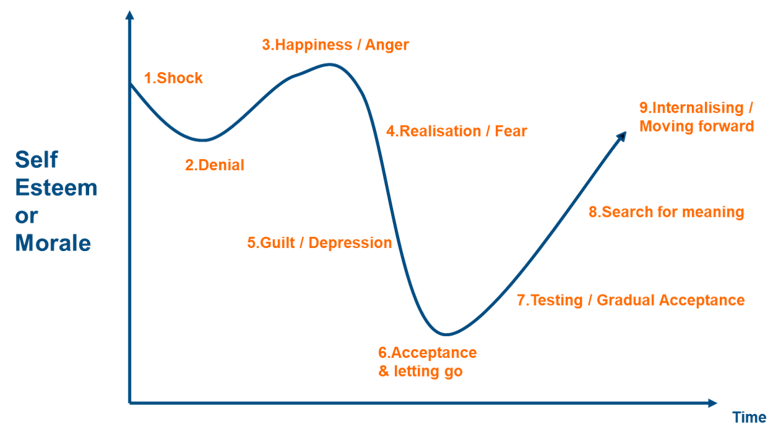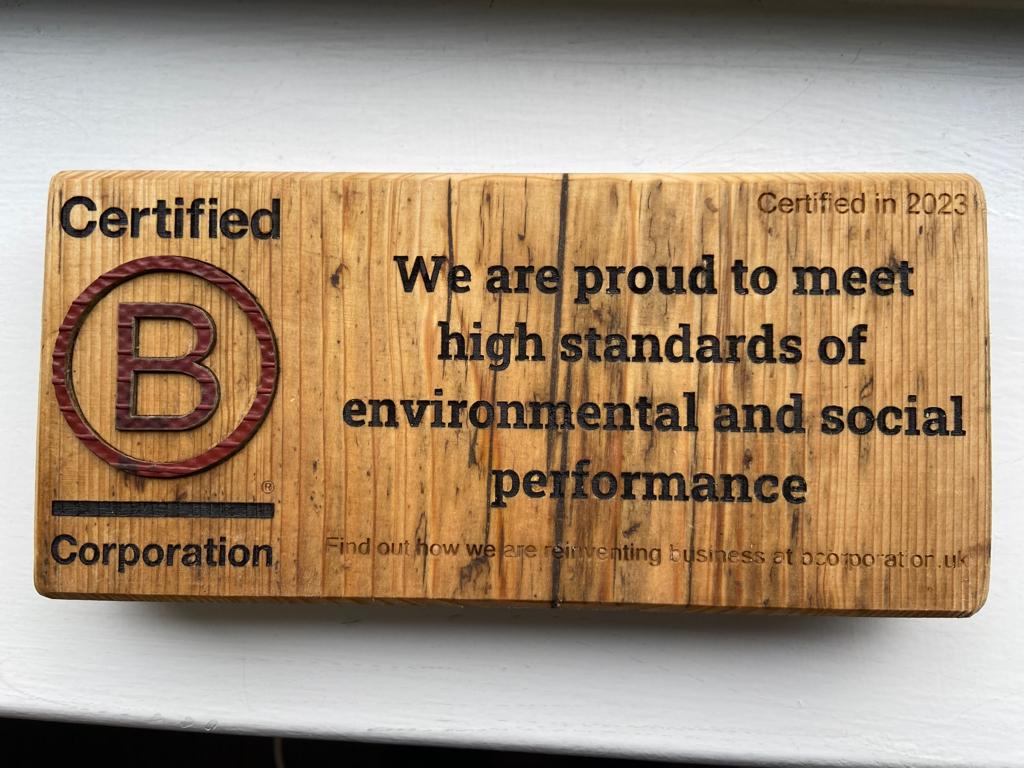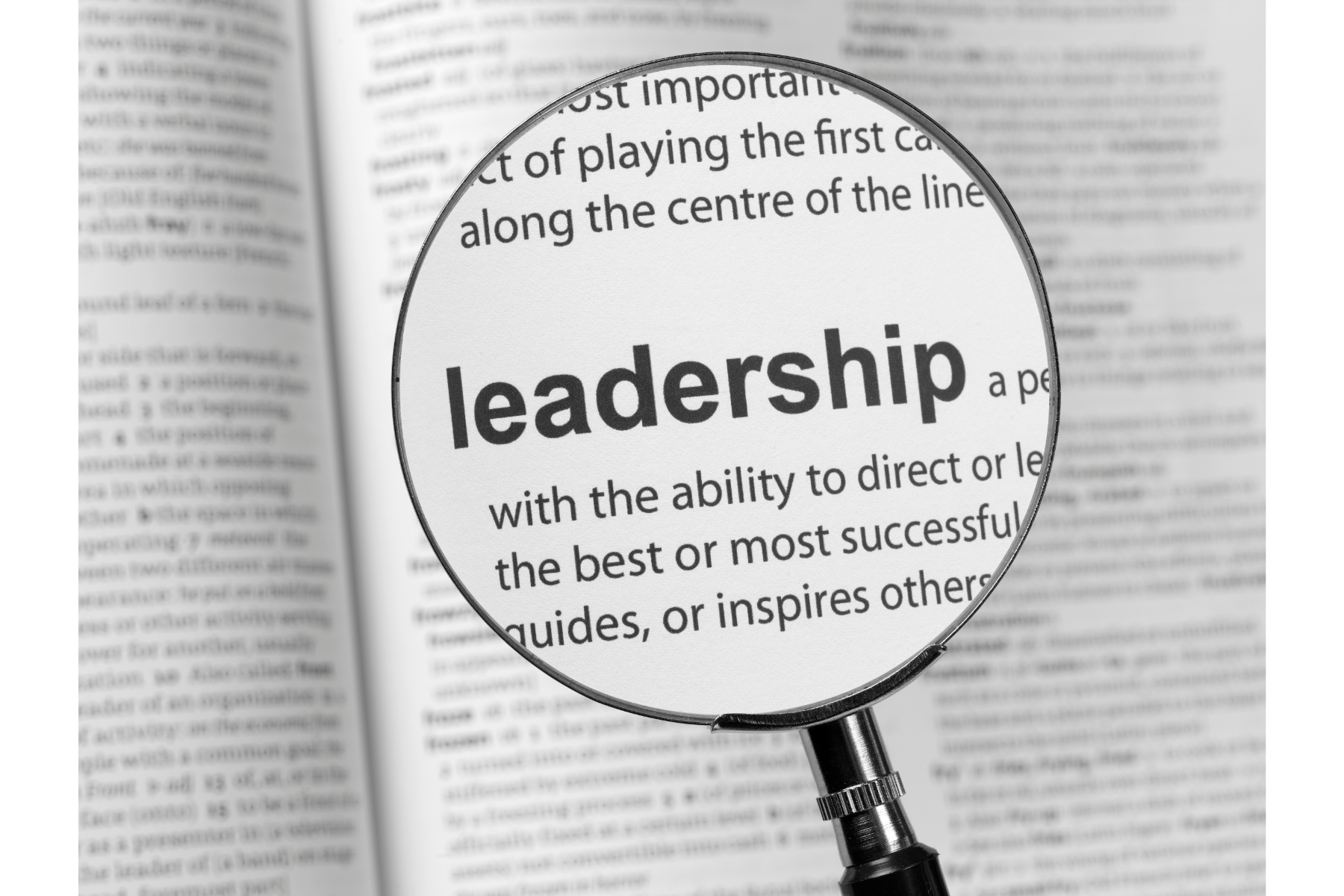It’s now been a year since the first lockdown was announced in the UK and as a result of the pandemic, change has been rippling through our political systems, financial markets and society. How can businesses focus on the priorities, principles and practical steps that deliver positive change in uncertain times?
It is important for business leaders to recognise the emotional process of change and the ‘Change Curve’ is a useful model to show the stages that people go through when they experience any major change.
As business leaders we can’t influence the world stage, but we can and must respond to the impacts of change and then proactively lead change in the context of our own companies. It’s important to keep an eye on external factors and then step back into the business and make sense of it for your people.

STAGE 1: SHOCK
Emotion: For example, the initial reaction for most of us on the 23rd March 2020 when Boris Johnson announced that the UK was going into lockdown was shock.
Leadership: There is nothing the business leader can do at this stage other than provide reassurance. Give people a snapshot of the business’s strength and what actions to focus on next. Keep it brief, no one is really listening, they’re all too busy trying to process the news of what the change means to them.
| Click here to download your free Leading Change e-book |
STAGE 2: DENIAL
Emotion: Denial is common after the shock of unexpected change, for example, during the first wave some people still behaved as if coronavirus was of no personal relevance to them and would only infect other people.
Leadership: Provide a little more reassurance encouraging people to keep calm and allow some time for adjustment. Some leaders will have sent a short letter to all staff, others may have given a few words of reassurance in a company Zoom call.
There was evidence of this leadership stance among some high-profile names; Rishi Sunak started his announcement about the new furlough scheme on 20th March 2020 with the words, “Let me speak directly to people’s concerns.” Further afield, New Zealand Prime Minister, Jacinda Ardern, has been widely applauded for her approach to the crisis where she has managed expectations at the same time as offering reassurance.
STAGE 3: HAPPINESS / ANGER
Emotion: As the numbness of shock wears off, more heightened emotional reactions often take hold. For some this is enthusiasm as they embrace spending more time with family whilst working from home, while for others there’s great anger at the forced social isolation and fear for their health and their family’s health.
Leadership: Within the business, it’s time to dissipate the height of negative emotions with positivity. Every group will have some positive, open minded and super-loyal people (referred to as the top 20%) and some who are the exact opposite, the poorer performers who moan and stir (the bottom 20%). Focus your time and energy on the top 20% with a sense of positivity relating to the next steps on what people can actually do. The mid 60% will follow the top 20% as they want the same attention.
Now’s also the time to prepare for a drop in confidence among your teams. That’s a natural response to uncertainty and requires empathy from the leader.
STAGE 4: REALISATION / FEAR
Emotion: As the days, weeks and months progress, a sense of realisation dawns and the height of emotion starts to ebb away. Change is going to happen, but you’re not sure what that means for you yet. There are more questions than answers, which creates uncertainty.
Leadership: Now, more than ever, it’s time to stick to the new outline plan which should be broken down into short term (within a month), medium term (one to three months i.e. within that quarter), and longer term which is the rest of the year. Clearly there will be more tactical actions if there is a deviation from the plan, or if the situation is fundamentally changed. Don’t lose sight of what you’re working towards but link this to what staff can effect - the tasks they do each and every day.
STAGE 5: GUILT / DEPRESSION
Emotion: As uncertainty affects confidence levels, it can lead to a state of depression, anxiety and confusion among those who are finding it hard to see a way forward or who long for the world to return to ‘the way it was’. Throughout the pandemic analysis has shown that a large percentage of adults have felt worried, stressed or anxious with over 50% reporting feeling medium or high levels of anxiety in February 2021 (ONS, 2020).
Leadership: Keep your support focused on the top 20% in your team; the middle 60% will notice this and be more likely to follow their lead, rather than get pulled further down into the doom-and-gloom of the bottom 20%.
STAGE 6: ACCEPTANCE & LETTING GO
Emotion: Basically, morale has hit rock bottom. People have exhausted themselves fighting the inevitability of change. For example, the twists and turns of the chaotic media headlines mean there is little left that surprises anyone, and it’s time to let go of the past reality.
Leadership: Look forward. How might you turn the ‘threat’ of change into opportunities for your business? Does the lower cost of exports from a weaker pound make you more competitive overseas? Do you have excess cash to invest while others are cutting back? Consider the strategies and systems you could introduce – or strengthen – to establish an innovative culture where adapting to future changes becomes part of your DNA.
STAGE 7: TESTING / GRADUAL ACCEPTANCE
Emotion: While the tentative relaxation of lockdown continues to unfold, so too does our personal acceptance that change is going to happen. Negotiations on a national and international stage will present ‘new versions’ of the future for the UK and its citizens. Individuals will begin to re-assess how they feel about this new reality.
Leadership: Look out for the people in your team who are beginning to see that the new dawn is beneficial; recognise, acknowledge and share their initiatives to adapt, whether that’s a great idea for a hot new lead, how to make a small improvement to a best-selling product, or research on a potential new market to exploit.
STAGE 8: SEARCH FOR MEANING
Emotion: The picture is becoming clearer. Time is helping people to regain perspective, and to make sense of what change might mean for themselves, their families, friends and communities. We’re establishing a sense of ourselves in the new normal.
Leadership: Focus on reinforcing positive change, recognising and celebrating successes within your team. Remind staff of the vision, and whether you’ve had cause to adapt your strategy in pursuit of this vision or not, remind people what the current plan is. And crucially, help your people to see what their role is in delivering the plan. By now, the mid 60% are following the top 20% into the brave new world.
STAGE 9: MOVING FORWARD
Emotion: Life has moved on. While the world is never free from trouble, we will have found reasons to be cheerful or concerned (ahead of the next wave of change).
Leadership: The optimism you’ve been garnering is being rewarded with success. Celebrate with your team.
The world that we are living in is uncertain and extremely volatile, so it is possible that future changes, such as the threat of new variants or further restrictions, could take people back to the beginning of the curve again. It is also important to remember that the model is not a linear one and people can move forwards and backwards along the curve or can get stuck at a certain point. By understanding where your employees are on the change curve, you can better plan how to support them through the process.
Leading change is one of the greatest challenges facing any business leader but hopefully these insights will help you to lead more effectively.
| Learn more about our Effectively Leading Change course on our QuoLux™ Online Leadership & Management Centre. |
If you'd like to learn more about improving your leadership skills, get in touch with us to discuss how our online or in-person courses and programs can help.
The QuoLux™ Blog brings leading insights to business leaders and managers, with models, tools and techniques that stimulate thinking and provide practical, actionable and valuable approaches. Topics include leadership, management, strategy, leading change, leading teams, employee engagement, Good Dividends and many more. Get articles like these and more when you subscribe.





